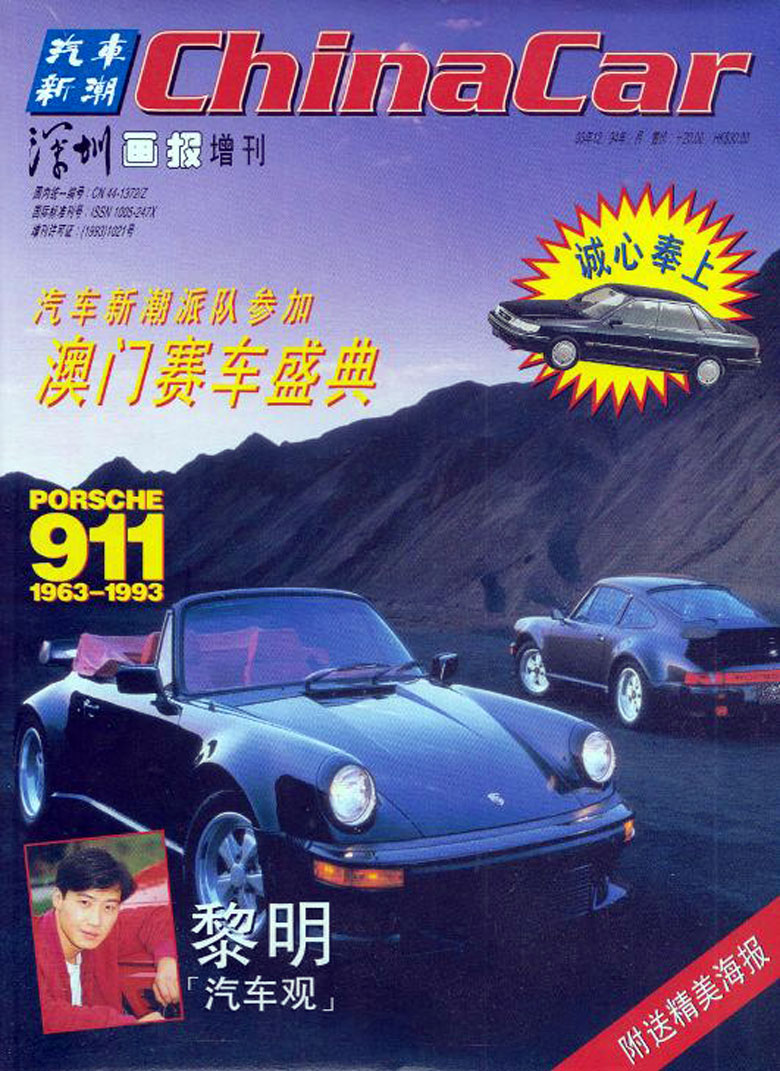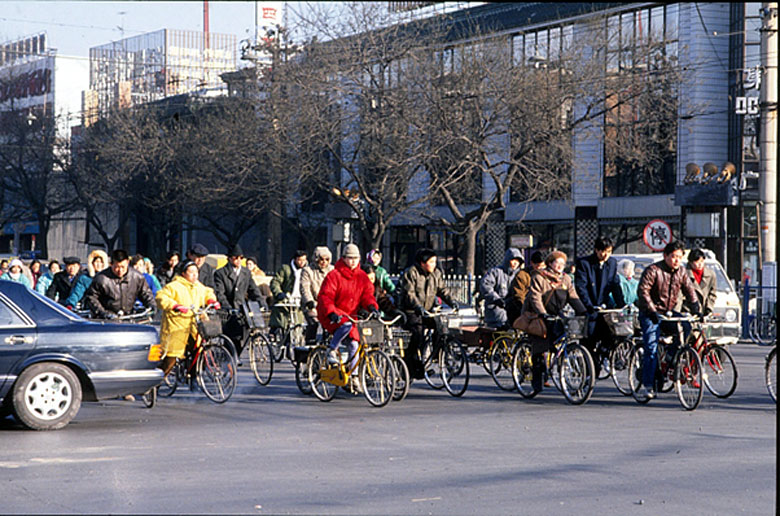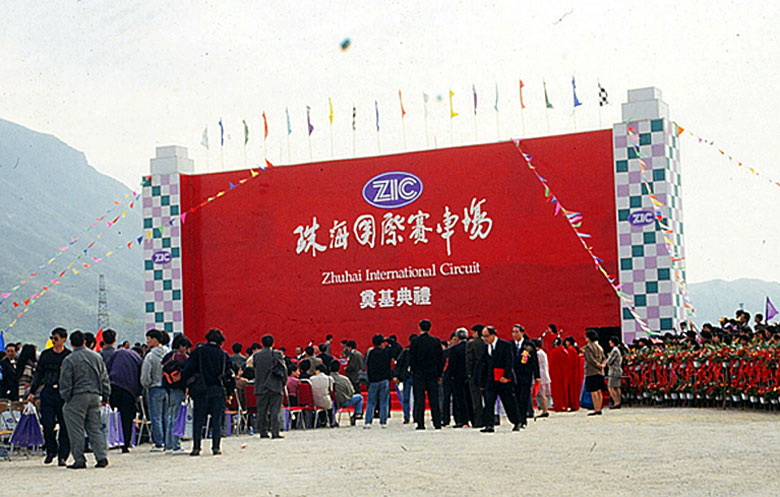Story and photos by Graham Gauld
Read Part 1
In the first episode of this yarn I left you with my reply to the company in Hong Kong regarding their wish to have someone edit a car magazine they planned for mainland China and going off to Silverstone for a historic race meet. On my return on a Sunday evening in 1993, there was a reply informing me that tickets from Edinburgh to Hong Kong via London would arrive the following day and could I fly on Wednesday.
I did, and spent three hectic days looking at a modern office with about 23 empty desks and 23 Apple computers and decided to accept their offer.
To say that moving to Hong Kong was a life-changer would be an understatement. I went from a reasonably tranquil and peaceful life into an over-populated, noisy, garish and remarkable part of the world; and that was just Hong Kong!
Basically, it was the most amazing challenge, because the first problem was the UK company that hired me made their money connecting lonely guys with Chinese girls for telephone conversations. They had never published anything before. Even their interest and knowledge about cars was sketchy to say the least but it provided me with a purpose and a challenge.
I must say I enjoyed it as the first – and only – issue of the magazine “China Car” was sent into China almost exactly ten weeks after I first sat down with a blank sheet of paper with one Brit designer – the brother of the owner – and about twelve Chinese secretaries and assistants.
I will not go into great detail but there were also fun times such as when one of Hong Kong’s senior policewomen arrived in the office.
She explained the police were worried about the driving standards in Hong Kong – marginally chaotic – and could I help them in a ‘road safety drive’ to be held on the dockside in Kowloon.
I created a driving test where you had to leave a start line and sprint to a braking line, then reverse through 90 degrees and park alongside a kerb.
The public were able to pay a fee and enter their cars with the money going to charity. I timed each person and gave them extra points for each inch they parked the front and back wheels off the kerb.
The “Sponsor” of the event was one of Hong Kong’s greatest movie heroes who had just begun to make a name for himself in Hollywood – Jackie Chan. As we all know Jackie took pride in the fact that he did his own stunts in movies. As I began speaking to the gathering crowd, he immediately wanted to have a go. But he told the audience he didn’t have a car.
At that, about 20 hands reached out with car keys and he chose a Mercedes sedan.
Needless to say, he blue-smoked away from the start, overshot the braking line, reversed and parked the car at about a 23 degree angle to the kerb! He jumped out to cheers, bowed and burst out laughing when he found out his performance was the worst of all!
Back then mainland China was not a pleasant place to visit and I was always conscious that as a Gweilo, or foreigner, you were being watched all the time. Also, no foreign company could sell anything in mainland China unless they had a Chinese business partner, and that was where the trouble started. My Chairman had signed up with a very questionable businessman in Shenzhen just across the border from Hong Kong. That was not a good deal, and we stopped publication after the first issue.
I will not bore you with the details; you can read about that in the autobiography I am writing, but the experience allowed me to get to grips with the vastness of China and the whole transportation business at that time. Remember we are talking about 1993 when at rush hour the main road leading through Beijing’s Tiananmen Square saw the few private cars having to compete with something like five or six lanes of people on bicycles!
In Hong Kong and in mainland China, the most popular car was the Volkswagen Santana and indeed Shanghai Volkswagen was the largest company in China at that time. This came about when VW dropped the Santana medium sized sedan in Europe and a Chinese company stepped in and not only bought the marketing rights but had all the stamping machinery and manufacturing bits brought from Wolfsburg in Germany and set it up so they could start building the car immediately.

Chinese built Volkswagen Santanas on the line in Shanghai. So everywhere you looked you could find VW Santanas with Chinese number plates.
My trip to Shanghai to visit the factory also underlined a quaint reaction when my fellow Chinese director and I got on the state China South airline and flew back to Hong Kong. When the plane landed and trundled along the runway all the Chinese in the plane clapped their hands in relief: In the time I spent in Hong Kong two jets fell off the runway at Kai Tak airport and nosedived into the harbour, thankfully with no loss of life, so our fellow passengers’ relief at the landing was probably justified.

Flying high in Hong Kong. Ask any pilot and he will tell you landing at Kai Tak, the old Hong Kong airport, was one of the most dangerous in the world. As a passenger when landing, you could see a woman working in the kitchen as you flew in.
Another memorable occasion came on a visit to Beijing to meet and talk about China’s plans for motor sport with Qi Jin Cheng, the Secretary General of the Federation of Automobile Sports for the Peoples’ Republic of China, and his Deputy, Zhang Yu Ren. I had already met Mr Zhang at Macau and he invited me to a meeting with the Secretary General the next time I was in Beijing as they were keen to develop motor sport. Mr Qi’s office was tiny and cramped. He explained they had held a small rally the previous year but as there were so few privately-owned cars in Beijing at the time his Government department had rented cars to members of the public who wanted to take part!
He added that they had plans to build a Grand Prix circuit and a few weeks later I received an invitation to the ground-breaking ceremony for the circuit near Guangdong, which was in the hills north of Zuhai just across the border of China with Macau. It was still a Portuguese colony at the time before being taken over, like Hong Kong, by China. With all the other guests I was put on a bus to visit the site in a charming rural setting where an enormous red back-board had been erected with a long table at which all the dignitaries sat. Then a long line of buses arrived bringing local farmers’ mothers and the local children’s band to witness this ceremony of turning the first spade to build the circuit. It was surreal. Unfortunately, when the circuit was completed it did not qualify for a full FIA accreditation to run a Grand Prix but was used for International GT racing.
Our excitement and disappointment at the launch of the first and last issue of China Car was softened by an approach from the Automobile Association of Hong Kong – which was still an English colony at the time – and asked if we could create another similar magazine, this time in Cantonese, the dialect spoken in Hong Kong, and English. I immediately got down to starting all over again and we produced “Drive” for the club and I continued for the next year which allowed me to train a young Chinese assistant to take over as Editor.
The experience allowed me to expand my horizons with the Hong Kong A.A. I also had a chance to attend many of the race meetings around South East Asia, which meant I got to see both Club and International racing in places like Pataya in Thailand, Shah Allam in Malaysia and of course the local circuit for Hong Kong, Macau. At all of those events there was a team of English marshals and officials who flew in from Hong Kong, all of them with proper International motor racing accreditation. It was almost like going to a UK race meeting, a bit of a feeling of home.

The best Hong Kong based racing driver when I was there was Charles Kwan, on the left holding the Ferrari 355 door. This was the Supercar race at Macau in 1994 and Kwan became the first driver to race the new 355 and won first time out.
By March 1995 I had tired of Hong Kong. A historic racing magazine I had started there also folded up because the company did not have the advertising clout needed to make it financially viable, and my Chinese assistant was ready to take over Drive magazine, so decided to leave.
I always had in mind eventually living either in Italy or the South of France with the simple reason that it was better to be poor in a warm climate than a cold one and my introduction to cars and motor sport in South East Asia came to an end. It was time to get back to Europe and pick up the threads.
Next time: the start of a 27-year sojourn in the South of France and the role of motor racing historian





Absolutely brilliant and beautifully told.
He does not seem to have slowed down since!
GG’s autobiog is eagerly awaited.